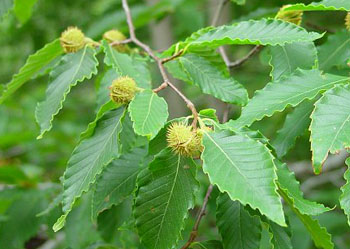Fagus sylvatica seed
The Purple Beech is one of our most beautiful trees.
European beech, from which this cultivar was developed, grows to 18 m (60′), but may reach 30 m (100′). The crown has dense foliage.
The smooth glossy leaves are a dark coppery-purple that is often tinged with dark green turning deep spinach green by mid-summer. Leaves are
broadly oval, up to 10 cm (4″) long, with a pointed tip, and 5 to 9 pairs of straight veins that extend to the wavy margins.
Fruit is a prickly husk, up to 2.5 cm (1″) long, on a hairy stem. Inside the husk are 2 to 3 triangular, edible nuts, each about 1.5 cm (5/8″)
long.
Medicinal use of Beech: The bark is antacid, antipyretic, antiseptic, antitussive, expectorant, odontalgic. A tar (or creosote), obtained by
dry distillation of the branches, is stimulating and antiseptic. It is used internally as a stimulating expectorant and externally as an
application to various skin diseases.
Edible parts : Young leaves – raw. A very nice mild flavor, they go well in a mixed salad. However, the leaves quickly become tough so only
the youngest should be used. New growth is usually produced for 2 periods of 3 weeks each year, one in spring and one in mid-summer. seed –
raw or cooked. A pleasant sweet flavor, though rather small . The seed can also be dried and ground into a powder and then used with cereal
flours when making bread, cakes etc. The seed is rich in oil.
Other uses : A semi-drying oil is obtained from the seed, it is used as a fuel for lighting, as a lubricant, for polishing wood etc. The seed
residue is poisonous. The leaf buds harvested in the winter and dried on the twigs are used as toothpicks. The leaves are gathered in autumn
and used as a stuffing material for mattresses etc

